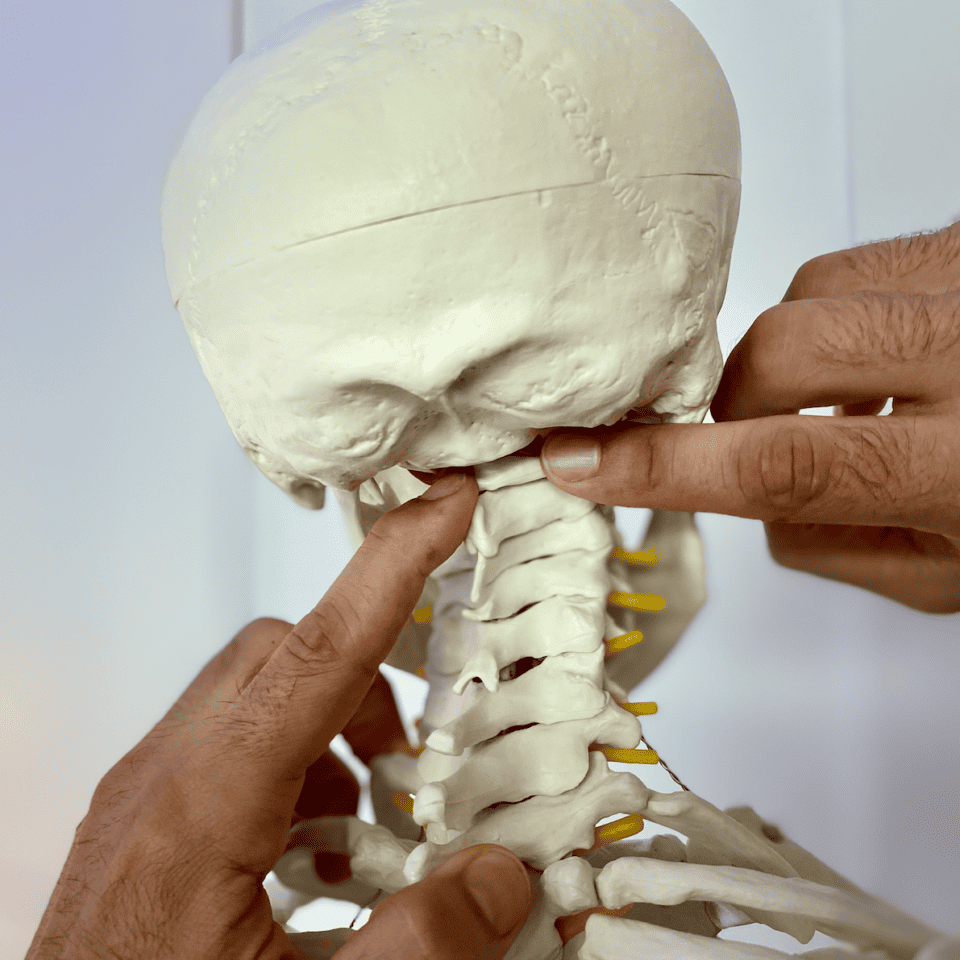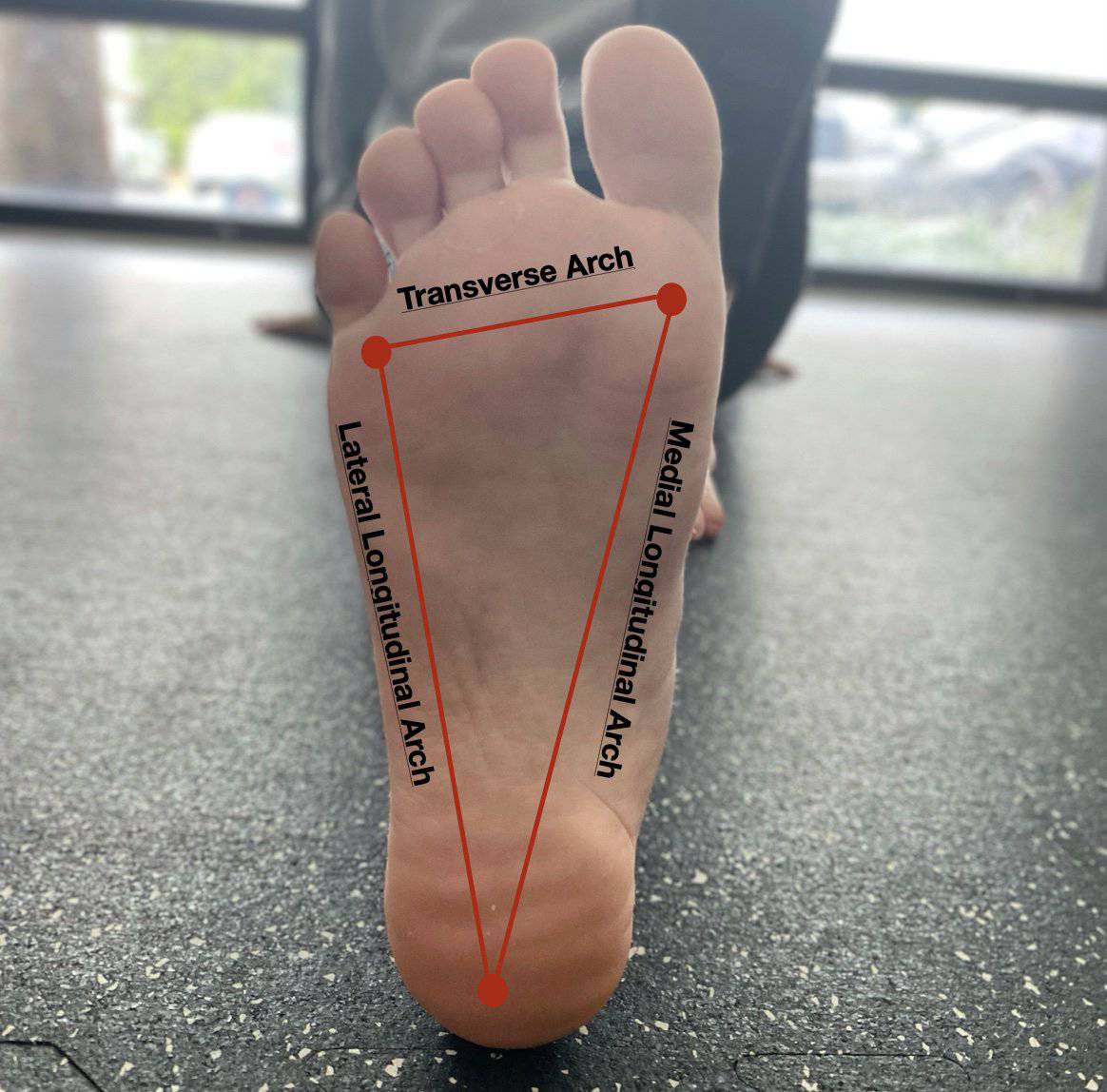Headaches are a common ailment that affects millions of people worldwide, impacting their quality of life and productivity. While there are various causes of headaches, one often overlooked area is the suboccipital triangle. In this blog, we will explore the significance of the suboccipital triangle in relation to headaches and discuss potential treatment options.
Table of Contents
- Why Neck Tension Leads to Chronic Headaches: The Suboccipital Connection
- The Suboccipital Triangle- Anatomy and Function:
- Suboccipital Triangle and Headaches:
- Breaking the Headache Cycle: Evidence-Based Treatment Approaches
- Treatment Options:
- Conclusion
- Living Headache-Free Is Possible – Let’s Work Together
Why Neck Tension Leads to Chronic Headaches: The Suboccipital Connection
As a chiropractor, I regularly educate patients about how the suboccipital region impacts their headaches. This small but crucial area at the base of your skull plays a vital role in head movement and stability. When these muscles become tense from poor posture or stress, they can compress important nerves, leading to persistent headaches.
The Suboccipital Triangle- Anatomy and Function:
The suboccipital triangle is a small anatomical region located at the base of the skull, formed by the convergence of three muscles: the rectus capitis posterior major, obliquus capitis superior, and obliquus capitis inferior. These muscles play a crucial role in head and neck movement, stability, and proprioception. They also house numerous nerves, including the greater occipital nerve, which is often associated with suboccipital headache (headache) and suboccipital muscle pain when irritated or compressed.
Experience the BodyFix Difference
Experience the difference that patient-centric, whole-body chiropractic care can make. Discover how The BodyFix’s unique approach addresses not just your pain, but your overall wellness for lasting results.
Suboccipital Triangle and Headaches:
The suboccipital triangle’s intricate relationship with the greater occipital nerve can contribute to headaches. 1When the muscles in this region become tense or develop trigger points, they can compress or irritate the greater occipital nerve, leading to referred pain and headache symptoms. Additionally, poor posture, stress, and prolonged sitting or computer use can exacerbate muscle tension in the suboccipital triangle, further increasing the likelihood of headaches.
Breaking the Headache Cycle: Evidence-Based Treatment Approaches
Let’s discuss the most effective approaches for addressing suboccipital-related headaches. Through a combination of targeted adjustments, mobilization techniques, and specific exercises, we can address both the immediate pain and its underlying causes. Here’s what you need to know about treating these headaches effectively…
Treatment Options:
Addressing headaches associated with the suboccipital triangle involves a multifaceted approach. Here are some potential treatment options:
- Stretching and Strengthening Exercises: Regularly performing stretching exercises that target the suboccipital muscles can help alleviate tension and reduce the occurrence of headaches. 2Strengthening exercises for the neck and upper back can also improve muscle stability and reduce strain. Check out our stability ball upper back exercise that helps improve posture.
- Chiropractic Manipulation/mobilization: Since most people work at a computer in our modern day we will find the head moving closer to the computer screen causing a straightened cervical spine and an extended occiput (base of the skull).3 Adjusting/mobilizing any areas of restriction from the Occiput to the C2 vertebrae is usually a must to help the sub-occipital muscles relax.
- Posture Correction: Maintaining proper posture throughout the day is crucial for preventing suboccipital muscle tension. Using ergonomic chairs, adjusting computer screens to eye level, and taking breaks to stretch can all contribute to better posture and reduced headache frequency. Working on your posture should be a lifestyle change and not just an exercise. A ton of neck issues come from an accumulative injury cycle of daily bad posture and will add up as final messages of pain.
- Massage and Manual Therapy Techniques: Professional massage or manual therapy sessions such as Active Release Techniques (A.R.T) can target the suboccipital triangle and help release tension in the muscles. A.R.T. can be effective in alleviating headache symptoms by allowing the tiny muscles to slide properly without putting any tension on close proximity nerves.4
- Class IV Laser Therapy/Summus Laser: Applying Laser protocols to the suboccipital region can provide lasting relief by relaxing muscles and “flushing out” levels of inflammation while increasing blood flow.
- Stress Management: Since stress can exacerbate muscle tension, adopting stress management techniques such as meditation, deep breathing exercises, or engaging in hobbies can be beneficial in preventing headaches.
The suboccipital triangle’s role in headaches is often overlooked, but understanding its significance can provide valuable insights for effective treatment. By incorporating exercises, posture correction, manual therapy, and stress management techniques, individuals can find relief from suboccipital triangle-related headaches and improve their overall well-being.
Conclusion
Living Headache-Free Is Possible – Let’s Work Together
Look, I understand how frustrating chronic headaches can be5. They affect everything – your work, your family time, and even your ability to enjoy simple daily activities. What many of my patients tell me after treatment is that they wish they’d addressed their suboccipital issues sooner. They simply didn’t know that this small area at the base of their skull could have such a big impact on their quality of life.
If you’re dealing with persistent headaches, especially ones that seem to start at the base of your skull, you don’t have to just “power through” or rely on pain medication forever. Here at The BodyFix, we can look at what’s really going on with your neck mechanics and develop a treatment plan that makes sense for your lifestyle.
I’d like to help you understand what’s causing your headaches and create a clear path forward. Whether it’s tension from long hours at the computer, stress, or previous injuries, we’ll get to the root of it together.
Ready to take the first step toward headache relief? Book your consultation. During your visit, we’ll do a thorough assessment and discuss the best treatment options for your specific situation. No cookie-cutter approaches – just focused, effective care to help you feel better.
Don’t let headaches hold you back any longer. Book your appointment today, and let’s work on getting you back to feeling your best.
The BodyFix Team
Experience the BodyFix Difference
Experience the difference that patient-centric, whole-body chiropractic care can make. Discover how The BodyFix’s unique approach addresses not just your pain, but your overall wellness for lasting results.
Find out more information from our experts at The BodyFix. Or Book an Appointment with us today to start your healing journey! For more information, you can call us at 843-981-4500.
- https://www.ncbi.nlm.nih.gov/books/NBK556133/ ↩︎
- https://www.ncbi.nlm.nih.gov/books/NBK582126/ ↩︎
- https://pmc.ncbi.nlm.nih.gov/articles/PMC2528269/ ↩︎
- https://pmc.ncbi.nlm.nih.gov/articles/PMC1447303/ ↩︎
- https://www.mayoclinic.org/diseases-conditions/chronic-daily-headaches/symptoms-causes/syc-20370891 ↩︎
Blog Disclaimer: The information provided on The BodyFix Chiro blog is for general informational and educational purposes only and is not intended as medical advice. These articles reflect our opinions and experiences but should not be used to diagnose or treat any health conditions. Always consult with your physician, chiropractor, or other qualified healthcare provider before starting any new treatment, exercise program, or making changes to your health routine. Any actions you take based on information from this blog are entirely at your own risk, and The BodyFix Chiro and its contributors disclaim any liability for the decisions you make based on this information.



